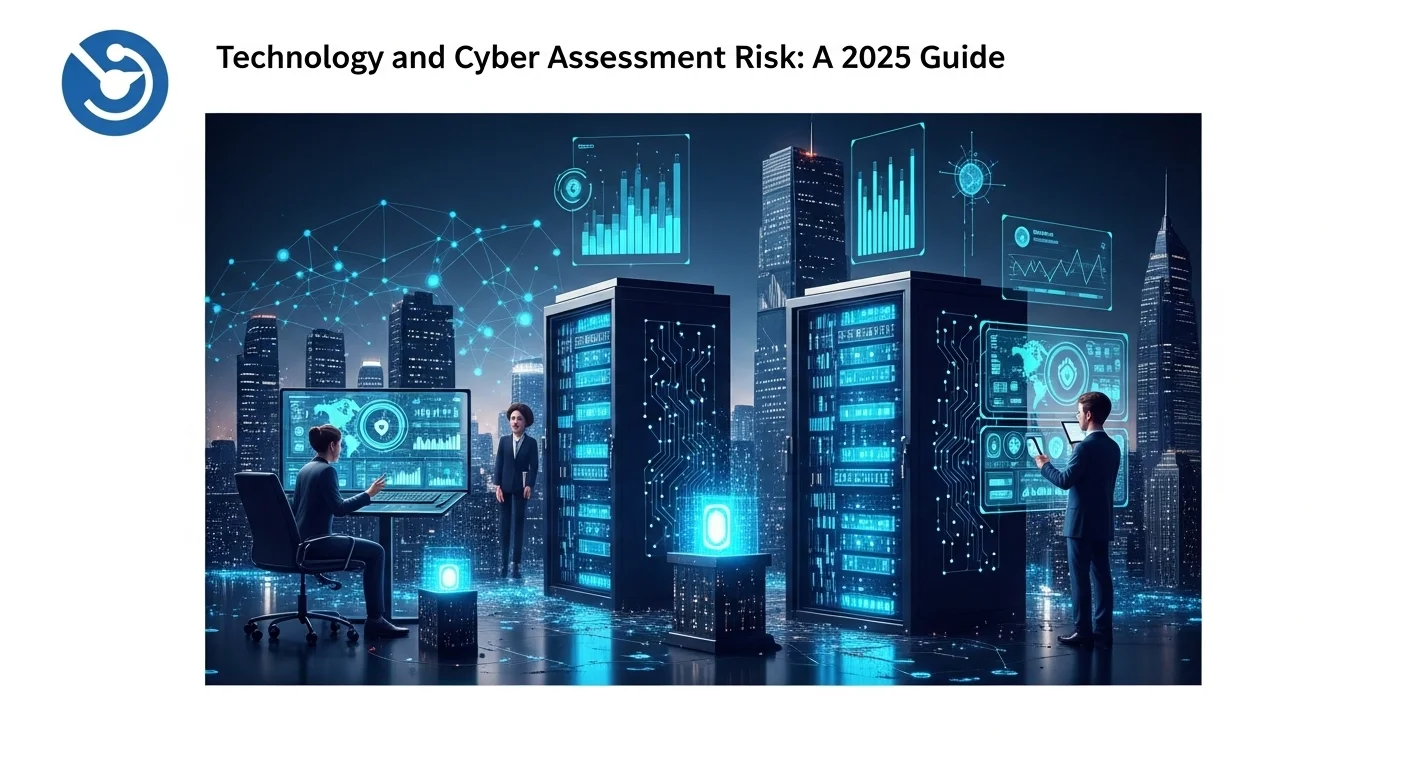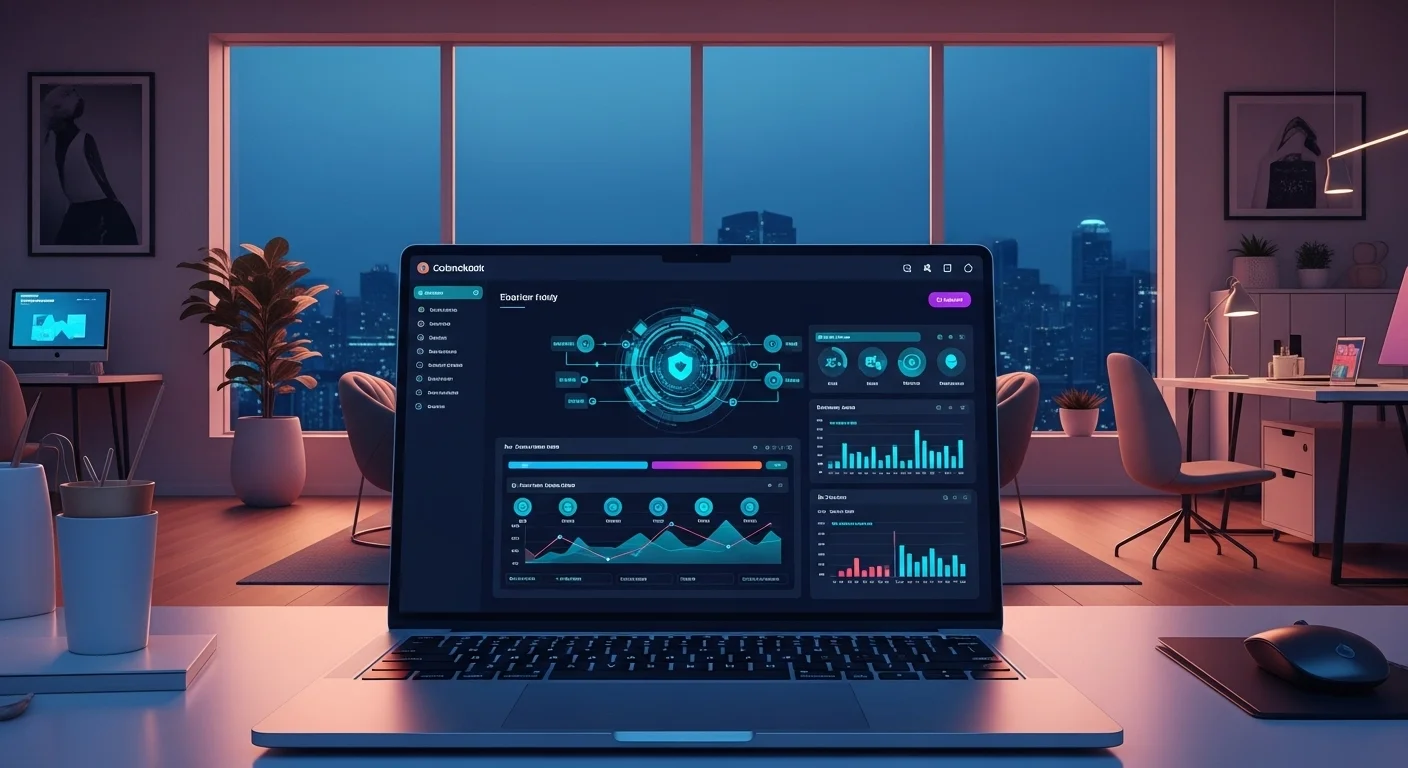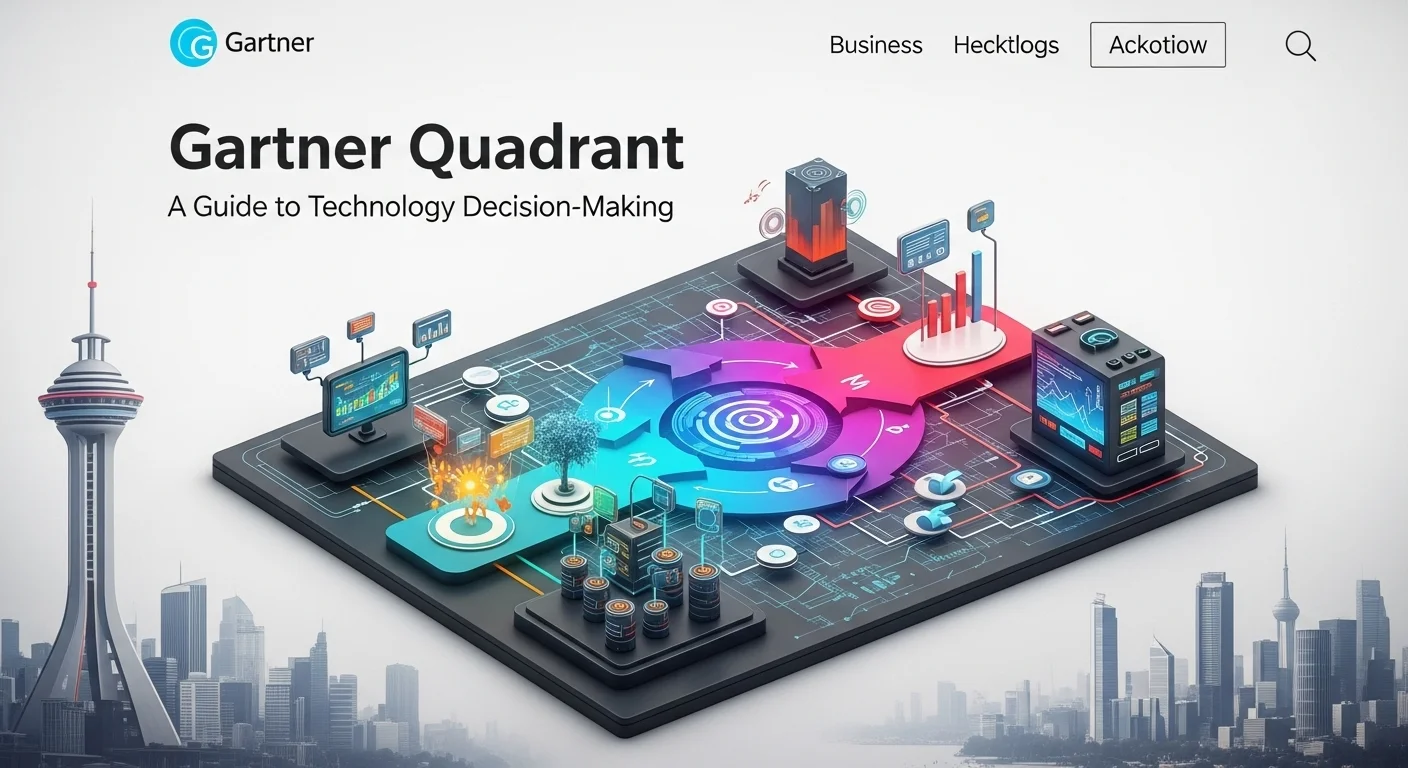Your Practical 2025 Guide to Cyber Risk Assessment

Executive Summary
I’ve spent over a decade in the cybersecurity trenches, and if there’s one thing I’ve learned, it’s that waiting for a cyberattack to happen is a losing game. The real power lies in understanding your risks before they become disasters. That's what this guide is all about. We're going to cut through the jargon and get straight to what matters. Forget confusing technical manuals; think of this as a conversation where I walk you through how to identify what your business can't afford to lose and how to protect it. We'll cover everything from the basic 'what' and 'why' to a step-by-step process you can actually use. By the end, you'll see cybersecurity not as an expense, but as a core part of your business strategy that builds trust, protects your bottom line, and lets you focus on growth with confidence.
Table of Contents
Table of Contents
What is a Cyber Risk Assessment, Really?
In a world where almost every part of a business is connected to the internet, we hear a lot about cyber threats. But how do you go from worrying about them to actually doing something? That's where a cyber risk assessment comes in. Forget the textbook definition for a moment. At its heart, a risk assessment is simply a structured way of asking and answering some fundamental questions: What technology and data are most important to my business? What bad things could happen to them? How likely are those bad things to happen? And if they do, how much will it hurt? It’s not a one-time tech audit; it's an ongoing business process that helps you make smart decisions to protect your company's future. The goal is to move from a reactive state of putting out fires to a proactive one where you’re preventing them from starting in the first place.
The importance of this process has skyrocketed. I’ve seen small businesses crippled overnight by a ransomware attack and large corporations suffer massive reputational damage from a data breach. These aren't just stories on the news; they are real events that happen because the organization didn't fully understand its risk profile. A formal risk assessment on cyber security gives you a clear, honest look at your specific situation. It’s the difference between navigating a minefield blindfolded and having a map that shows you where the dangers are, allowing you to plot a safe course. In my experience, the organizations that thrive are the ones that treat this as a strategic imperative, not just an IT task.
The Three Pillars of Cyber Risk: Threats, Vulnerabilities, and Impact
To really get it, let's break down cyber risk into three simple parts. Think of it like securing your house.
- Threats: These are the 'who' or 'what' that could cause harm. In our house analogy, a threat is a burglar in the neighborhood. In the digital world, threats are things like hackers, malware, a phishing email, or even a disgruntled employee. Identifying these potential dangers is the first step.
- Vulnerabilities: This is a weakness or an opening that a threat can exploit. For your house, an unlocked window is a vulnerability. In your business, it could be an unpatched software, a weak password like 'Password123', or an employee who hasn't been trained to spot a phishing attempt. A cyber attack risk assessment is essentially a hunt for these unlocked windows across your entire digital landscape.
- Impact: This is the consequence, or the 'so what?'. If a burglar (threat) gets through your unlocked window (vulnerability), the impact is that your valuables are stolen. In business, the impact could be devastating: financial loss from theft or fines, operational chaos from system downtime, loss of customer trust, or stolen intellectual property.
Your actual risk level is the combination of these three things. A very common threat aimed at a critical vulnerability with a high potential impact is a five-alarm fire. The whole point of risk assessment and management in cyber security is to analyze this interplay so you can focus your time and money where it matters most.
Beyond IT: The Real-World Business Benefits
When done right, the benefits of a cyber risk assessment echo throughout the entire business.
First and foremost, you get a stronger security posture. It sounds technical, but what it really means is peace of mind. By finding and fixing your biggest weaknesses, you drastically lower the chances of a damaging breach. You’re not just hoping you’re secure; you have a clear plan.
It also leads to smarter spending, which is a huge benefit. Cybersecurity can feel like a black hole for money. Instead of buying every shiny new security tool, an assessment tells you exactly where your biggest risks are. This allows you to allocate your budget effectively, getting the most bang for your buck and preventing wasteful spending on things you don't actually need.
Then there's regulatory compliance. Whether it's GDPR, HIPAA, or another industry standard, most regulations require you to conduct regular risk assessments. Having a formal process not only keeps you out of legal trouble but also provides the paperwork to prove you're taking security seriously.
Finally, and this is a big one I’ve seen make a real difference, it builds trust. Customers and partners are smarter than ever about data privacy. Being able to demonstrate that you have a mature approach to protecting their information becomes a powerful competitive advantage. It shows you’re a reliable and trustworthy organization to do business with. A solid risk assessment for cyber security is the foundation for building that digital trust and resilience.

Your Step-by-Step Guide to Performing a Cyber Risk Assessment
Okay, so we agree that a cyber risk assessment is crucial. But how do you actually do one without getting lost in the weeds? Think of it less as a rigid scientific experiment and more as a structured investigation. Over the years, experts have developed roadmaps, or frameworks, to guide us. Let’s look at the most common ones and then walk through the process step-by-step.
Choosing Your Roadmap: Common Frameworks
You don't have to reinvent the wheel. Several well-respected frameworks can provide a solid structure for your assessment. I’ve used all of these, and each has its strengths:
- NIST Cybersecurity Framework (CSF): This is my go-to recommendation for most organizations, especially in the U.S. It's flexible, easy to understand, and not overly prescriptive. It organizes your efforts into five simple functions: Identify, Protect, Detect, Respond, and Recover. It’s a fantastic way to structure your thinking about your entire cybersecurity program.
- ISO/IEC 27001/27005: If you're a global company or need to prove your security posture to international partners, the ISO standards are the gold standard. ISO 27001 is a certification for your whole security management system, and a risk assessment is a mandatory part of it. It’s more formal and rigorous than NIST but carries a lot of weight.
- FAIR (Factor Analysis of Information Risk): This one is a game-changer when you need to talk to the finance department or the board. FAIR is a quantitative model that helps you put a dollar value on cyber risk. Instead of saying a risk is 'high,' you can say, 'This risk has a probable annual loss of $500,000.' That gets people's attention and makes justifying security investments much easier.
The best framework for you depends on your industry, size, and goals. Don't be afraid to borrow ideas from different ones to create a hybrid approach that works for you.
The 7-Step Process for a Thorough Assessment
No matter which framework you use as a guide, the actual process tends to follow these logical steps. Here's how I walk my clients through it:
- Step 1: Know What You're Protecting (Scope & Asset Identification): First, you can't protect what you don't know you have. We start by making a list of all your critical assets. This isn't just laptops and servers; it's your customer data, your intellectual property, your financial systems, your brand reputation. I call these the 'crown jewels'—the things that, if compromised, would seriously harm your business.
- Step 2: Identify the Dangers (Threat Identification): With your list of crown jewels, you then brainstorm the potential threats. Think like a bad guy. Would a hacker want your customer list? Could a natural disaster take out your data center? Could an employee accidentally delete a critical database? List all the plausible threat scenarios.
- Step 3: Find the Weak Spots (Vulnerability Identification): This is where you look for those 'unlocked windows.' We use a mix of technical tools like vulnerability scanners and manual checks like reviewing security policies. Are you running outdated software? Do employees use weak, reused passwords? Are your cloud services configured securely? This is a core part of any cyber attack risk assessment.
- Step 4: Connect the Dots (Risk Analysis): Here, we put it all together. For each threat and vulnerability pairing, you determine two things: the likelihood it will happen and the impact if it does. You can use a simple scale (low, medium, high) or a more detailed numerical score. This helps you see which risks are just background noise and which are clear and present dangers.
- Step 5: Prioritize Your Battles (Risk Evaluation): You can't fix everything at once. Now you take your list of analyzed risks and rank them, from most critical to least. This is where you compare the risk level against your organization's 'risk appetite'—how much risk you’re willing to live with. Anything above that threshold becomes a priority.
- Step 6: Create a Game Plan (Risk Treatment): For each high-priority risk, you decide what to do. The four main options are: Mitigate (implement a security control, like a new firewall or training), Transfer (buy cyber insurance to cover potential financial loss), Avoid (stop the risky activity altogether), or Accept (formally acknowledge the risk and do nothing, usually for low-level risks).
- Step 7: Document, Communicate, and Repeat (Reporting & Monitoring): Finally, write it all down. This report is your roadmap for action and your proof of due diligence for regulators. Share the key findings with leadership. And remember, risk assessment and management in cyber security is a cycle, not a one-off project. The digital world is always changing, so you need to revisit this process regularly—at least once a year or whenever your business undergoes a major change.

Leveling Up: Pro Tips and Tools for Your Cyber Strategy
Once you've got the basics of Cyber Assessment Risk down, you can start refining your approach to make it truly effective. A mature security program isn't just about running an annual assessment; it’s about embedding a risk-aware mindset into your daily operations. Here are some tips and strategies I've seen work wonders for organizations looking to improve their technology experience and security posture.
Best Practices from the Field
Think Beyond the Severity Score: Many teams get fixated on a vulnerability's technical score (like a CVSS score). A 'critical' vulnerability on a test server that's not connected to the internet is far less of a problem than a 'medium' vulnerability on your customer-facing payment portal. Always add business context. Ask: 'How important is the system this affects?' and 'Is this weakness being actively exploited by attackers right now?' This risk-based approach ensures you're fixing the problems that truly matter to your business.
Make Threat Intelligence Your Best Friend: Don't assess risks in a vacuum. Your program should be fueled by real-world threat intelligence. By understanding what techniques and targets are popular with attackers in your industry, you can focus your defenses proactively. This transforms your cyber risk assessments from a generic check-up into a highly targeted strategic exercise.
Embrace Continuous Monitoring: The idea of a once-a-year assessment is becoming obsolete. Your digital footprint changes every day. I strongly advocate for tools and processes that provide continuous monitoring. Automation is your ally here. Automated tools can constantly scan for new vulnerabilities and misconfigurations, giving you a real-time view of your risk posture. This is the future of effective risk assessment and management in cyber security.
Practice for Game Day: A key output of your cyber attack risk assessment is knowing what could go wrong. Use that knowledge to build and test your incident response plan. Run tabletop exercises where you simulate a breach scenario. 'Okay team, our customer database has been encrypted. What are the first three things we do? Who calls who?' Practicing your response ensures that if the worst happens, your team can react with muscle memory, not panic.
Build a Human Firewall: Your employees can be your greatest vulnerability or your strongest defense. It all depends on your company culture. Go beyond boring annual training. Create a security culture where people feel empowered to ask questions and report suspicious emails without fear of being shamed. When security becomes everyone's responsibility, you multiply your defensive capabilities.
Translate Risk into Dollars and Cents: This is my number one tip for getting executive buy-in. To leadership, 'We have a critical vulnerability' is abstract. But 'This vulnerability gives us a 20% chance of a $2 million loss this year, and we can fix it for $50,000' is a clear business decision. Using quantitative models like FAIR makes your risk assessment on cyber security a powerful tool for strategic conversations and budget approvals.
Powerful Tools to Enhance Your Experience
Leveraging the right technology can supercharge your risk assessments. Here are a few categories of tools that are making a huge difference today:
Attack Surface Management (ASM) Platforms: Think of these tools as a satellite view of your company's entire online presence. They find all your internet-facing assets, including servers and applications you forgot you had (shadow IT), and point out potential exposures.
Breach and Attack Simulation (BAS) Tools: These platforms are like having an automated, safe 'hacker' on your team. They continuously run simulated attacks against your systems to test if your security controls are actually working as expected. It’s the ultimate way to validate your security spending.
Cloud Security Posture Management (CSPM) Tools: As more companies move to the cloud, simple misconfigurations have become a massive source of breaches. CSPM tools constantly scan your cloud environments (like AWS or Azure) for these kinds of mistakes, ensuring your cloud infrastructure stays secure.
A Quality External Resource I Always Recommend
If you only bookmark one resource from this article, make it this one. The NCSC (National Cyber Security Centre) in the UK provides some of the most practical, no-nonsense guidance on the web. Their collection on risk management is fantastic for organizations of any size, breaking down the process into clear, actionable steps. It's an authoritative, non-commercial source I trust completely. You can explore it here: NCSC Risk Management Collection.
Ultimately, mastering Cyber Assessment Risk is a journey. By adopting these strategies and tools, you can transform your security program from a defensive cost center into a true business enabler, giving you the confidence to innovate and grow securely in our digital world.
Expert Reviews & Testimonials
Sarah Johnson, Business Owner ⭐⭐⭐
The information about Cyber Assessment Risk is correct but I think they could add more practical examples for business owners like us.
Mike Chen, IT Consultant ⭐⭐⭐⭐
Useful article about Cyber Assessment Risk. It helped me better understand the topic, although some concepts could be explained more simply.
Emma Davis, Tech Expert ⭐⭐⭐⭐⭐
Excellent article! Very comprehensive on Cyber Assessment Risk. It helped me a lot for my specialization and I understood everything perfectly.



